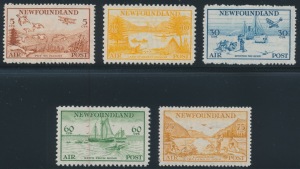The stamps of Newfoundland have always been a favorite with philatelists. The internal demand in Newfoundland itself is small because the population of that province is small but the philately of Newfoundland is interesting and has always attracted Canadian collectors, British Commonwealth collectors and US collectors. The stamps are interesting and well engraved. The first issues are very scarce and have some of the rarest stamps in philately although listing major catalog numbers based solely on paper and shade differences has always seemed silly to me. Stamps printed from the same plates and of the same denomination and color should generally be the same major catalog number and varieties of paper and shade should be minor "a" numbers. This is not the case with the first issues of Newfoundland and collectors do not readily take to these stamps. The twentieth century issues are very well engraved and tastefully designed and have always been avidly collected. As Newfoundland was always the landfall site for planes flying from Europe to America, Newfoundland was involved in many of the earliest transatlantic flights and the airmail stamps are popular and well collected. The have been few area of philately that have been as steadily popular as Newfoundland and in fact this country is the exception to the "dead country" rule which states that over time countries that no longer issue stamps tend to decline in popularity among collectors. The reason for this is that new collectors are not attracted as readily to the "dead countries"(as new issues make the news and attract new collectors) and as existing collectors exit the hobby there are fewer people who want dead country stamps.
Newfoundland
Archive

